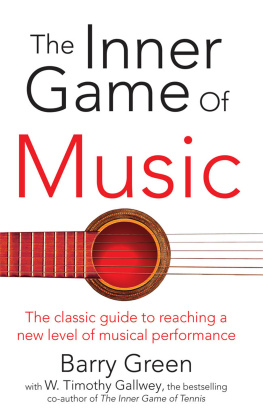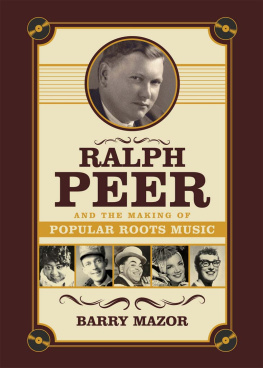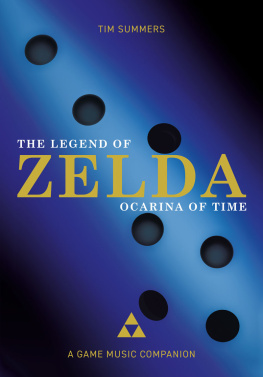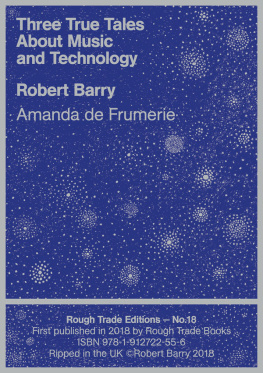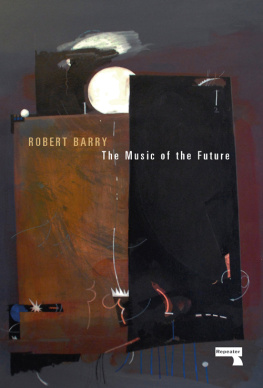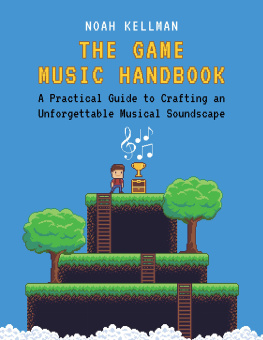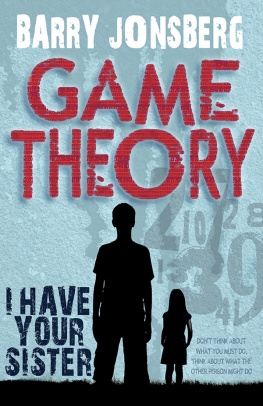Barry Green - The inner game of music
Here you can read online Barry Green - The inner game of music full text of the book (entire story) in english for free. Download pdf and epub, get meaning, cover and reviews about this ebook. year: 2014, publisher: Pan Macmillan UK, genre: Religion. Description of the work, (preface) as well as reviews are available. Best literature library LitArk.com created for fans of good reading and offers a wide selection of genres:
Romance novel
Science fiction
Adventure
Detective
Science
History
Home and family
Prose
Art
Politics
Computer
Non-fiction
Religion
Business
Children
Humor
Choose a favorite category and find really read worthwhile books. Enjoy immersion in the world of imagination, feel the emotions of the characters or learn something new for yourself, make an fascinating discovery.
- Book:The inner game of music
- Author:
- Publisher:Pan Macmillan UK
- Genre:
- Year:2014
- Rating:4 / 5
- Favourites:Add to favourites
- Your mark:
- 80
- 1
- 2
- 3
- 4
- 5
The inner game of music: summary, description and annotation
We offer to read an annotation, description, summary or preface (depends on what the author of the book "The inner game of music" wrote himself). If you haven't found the necessary information about the book — write in the comments, we will try to find it.
The inner game of music — read online for free the complete book (whole text) full work
Below is the text of the book, divided by pages. System saving the place of the last page read, allows you to conveniently read the book "The inner game of music" online for free, without having to search again every time where you left off. Put a bookmark, and you can go to the page where you finished reading at any time.
Font size:
Interval:
Bookmark:
INNER
GAME
OF
MUSIC
Overcome obstacles, improve concentration
and reduce nervousness to reach a new level
of musical performance
BARRY GREEN with
W. TIMOTHY GALLWEY
PAN BOOKS
The Inner Game of Music
This is the first book written about the Inner Game principles of natural learning that applies this methodology to a subject matter outside the area of sports. I am pleased that this should be the case for several reasons, since sports and music share similarities that are relevant within a learning context.
People play sports and play music, yet both involve hard work and discipline. Both are forms of self-expression which require a balance of spontaneity and structure, technique and inspiration. Both demand a degree of mastery over the human body, and yield immediately apparent results which can give timely feedback to the performer. Since both sports and music are commonly performed in front of an audience, they also provide an opportunity for sharing the enjoyment of excellence, as well as the experience of pressures, fears and the excitement of ego involvement.
The primary discovery of the Inner Game is that, especially in our culture of achievement-oriented activities, human beings significantly get in their own way. The point of the Inner Game of sports or music is always the same to reduce mental interferences that inhibit the full expression of human potential. What this book offers is a way to acknowledge and overcome these obstacles in order to bring a new quality to the experience and learning of music.
I found that much of the self-interference in the practice of sports originated in the way they were taught. The Inner Game sports books presented a radically different approach to learning. Techniques for heightened performance were successfully conveyed, without the normal frustrations and self-judgements that tend to take the joy out of learning and playing the game. In The Inner Game of Music Barry Green has translated these methods in a way that promises to bring new life and learning possibilities to this field of endeavour.
Since the success of The Inner Game of Tennis in the mid-seventies, many people have approached me to co-author Inner Game books on a variety of subjects. Barry was excited by the results he had achieved with Inner Skiing, and wanted to write a book applying the methodology to music. You know, Tim, he exclaimed to me, I could write a book on the Inner Game of music, almost by just changing a few key words in any of your other books. Its all the same magic; it will work anywhere!
Id often thought about the possibility of cranking out simple translations of the Inner Game into different fields. But I felt it was important for Inner Game methods to be re-created to reflect the unique and special aspects of a particular subject. I asked, Barry, how would you like to take two or three years and explore the possibilities that the Inner Game might bring to the field of music? Explore them in your playing with the symphony, and with your students, develop methods and new techniques, and then refine them when you have some experience in using them. Then, when there is sufficient evidence that the technology is feasible and workable, we might think about doing a book to share what we have learned with others.
What distinguished Barry Green is that he accepted this challenge, and didnt speak to me about writing a book for nearly three years. During this time he did literally thousands of hours of research and experimentation with his own performances and in his teaching. Barrys commitment to making a difference in the way music is learned takes this book out of the realm of clever theory. It is a book that succeeds as a practical guide for improving the quality of music experience.
Barry wrote the text and developed the specific techniques that are presented. I consulted closely with Barry on the content of each chapter, and take responsibility for the integrity of the expression of Inner Game principles. Ours has been a close and yet informal collaboration. As Barry began developing applications to music, I became more and more intrigued with music myself. Not only did Barry and I lead Inner Game of Music seminars with groups such as the Music Educators National Conference, but I found time in my already overloaded work schedule to take up the alto recorder so that I might have my own Inner Game of music learning laboratory.
What impressed me most about Barry was his ability to shift his sights from his initial interest in writing a book, to making the Inner Game of Music a breakthrough experience both for himself and his students. From this background of experience comes an unquenchable enthusiasm for what the Inner Game can bring to the music world. My strong recommendation to the reader is to experience this book in much the same way. This is not a book of right answers. Rather, it is an exploration of new possibilities and a guide to be used in your own style of learning. It is an invitation to let go of some old rules, and to trust increasingly in your innate powers of learning. It is not a rejection of technique, but an approach to the learning of technique which does not inhibit musical expression.
My own brief experience with teaching these methods to music students suggests that they are remarkably successful. Musicians at all levels of experience demonstrated dramatic shifts in the quality of their music performance, even with brief instruction. I was used to seeing these kinds of transformations taking place on the tennis court, and got a special sort of pleasure in seeing such immediate results in music as well.
The same mechanism for heightened performance is at work in both sports and music, where overteaching or overcontrol can lead to fear and self-doubt. It is impossible really to concentrate on a tennis ball when your head is filled with scores of instructions. It is next to impossible to enjoy the game or play it very well when the emotions are involved in the fear of failure or not looking good before ones instructor. Fear and overcontrol do not produce the best tennis players; they are also likely to inhibit the production of good music.
It seems to me that the very essence of music is the expression of the self. It needs a milieu that is conducive to reaching into ones source of creativity and that allows for freedom of expression. Just as the end product of the study of music is enjoyment, virtuosity and inspiration, the actual process of learning and teaching can yield the same quality of experience. It is my hope that readers of The Inner Game of Music will use this wealth of material to help them experience the joy of music to the fullest.
W. Timothy Gallwey
1 | The Mozart in us |
Wolfgang Amadeus Mozart, of course, was a prodigy. How else can you explain someone who started to compose at the age of five; learned to play the harpsichord, violin and organ; toured Europe as a concert musician; and by the age of thirteen had written sonatas, symphonies, concertos and operettas?
But our serious picture of the young genius may not help us to glimpse the very real child he also was. While touring England as a concert musician with Johann Christian Bach, he used to visit the taverns. Little Wolfgang and Johann Christian took a gleeful delight in playing with the brass spittoons, and while Johann Christian was content merely to score an accurate hit in the centre of the spittoon, Wolfgang Amadeus would aim his spittle at the rim and send the spittoon spinning, until the reflected golden light of the many candles spun around and around the room, and everyone in the tavern began to dance.
Not too many people know that Mozart was also one of the finer billiards players in Europe, or that he gained inspiration for his music from listening to the click of the balls and the soft thud as they bounced off the green baize of the billiard table.
Font size:
Interval:
Bookmark:
Similar books «The inner game of music»
Look at similar books to The inner game of music. We have selected literature similar in name and meaning in the hope of providing readers with more options to find new, interesting, not yet read works.
Discussion, reviews of the book The inner game of music and just readers' own opinions. Leave your comments, write what you think about the work, its meaning or the main characters. Specify what exactly you liked and what you didn't like, and why you think so.

